Gerne sind wir Ihnen dabei behilflich, hinsichtlich der Entwicklungen in der Verpackungsbranche auf dem Laufenden zu bleiben.
Weiterführende Informationen finden Sie in den folgenden Abschnitten:
Lorem ipsum dolor sit amet, consectetur adipiscing elit. Ut elit tellus, luctus nec ullamcorper mattis, pulvinar dapibus leo.
Newsletter
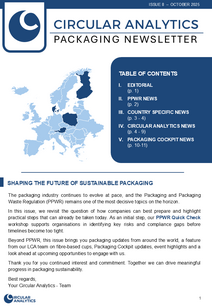
Circular Packaging Newsletter 04/2025
November 2025
- Shaping the Future of Sustainable Packaging
- From Compliance to Opportunity: Preparing for the PPWR
- Country-Specific Updates regarding the Packaging Industry
- Circular Analytics News – Plastic or Paper Packaging?, The Role of Packaging to Fight Climate Change, WPO at Fachpack, Recyclability under the PPWR
- Packaging Cockpit News – New Landing Page, Digital Packaging Transformation Event, PACO at Fachpack, Sustainability in Packaging Europe
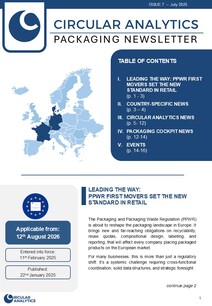
Circular Packaging Newsletter 03/2025
Juli 2025
- Leading the Way: PPWR First Movers Set The New Standard in Retail
- Country-Specific Updates regarding the Packaging Industry
- Circular Analytics News – Important Findings on Technical Recyclability & Carbon Footprint, Call for Expert Input on Material Loss, ProZero – Prospective LCA
- Packaging Cockpit News – Digital Packaging Data Framework & Management, Forum Rezyklat, Digitalisation of Packaging Data
- Upcoming Events
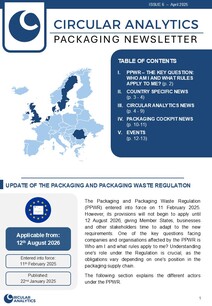
Circular Packaging Newsletter 02/2025
April 2025
- Update of the Packaging and Packaging Waste Regulation
- Country-Specific Updates regarding the Packaging Industry
- Circular Analytics News – Emptiability of Cosmetic Packaging, LCA of PE Packaging and Alternatives, Acidification as LCA Impact Category
- Packaging Cockpit News – Initiative Digital Packaging Transformation, Latest Events, Features and Innovations
- Upcoming Events
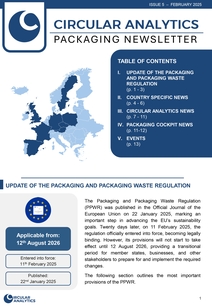
Circular Packaging Newsletter 01/2025
Februar 2025
- Update of the Packaging and Packaging Waste Regulation
- Country-Specific Updates regarding the Packaging Industry
- Circular Analytics News – Minimisation Publication, Benchmarking Publication and LCA Standardization
- Packaging Cockpit News – Latest Events, Features and Innovations
- Upcoming Events
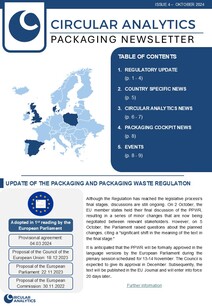
Circular Packaging Newsletter 04/2024
Oktober 2024
- Updates on the PPWR & the EU deforestation regulation
- Country-specific updates regarding the packaging industry
- Circular Analytics News – 4Evergreen Guideline & Climate change impact
- Packaging Cockpit News – Latest events, features and innovations
- Upcoming events
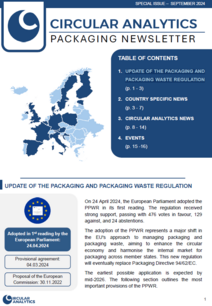
FACHPACK Sondernewsletter
September 2024
- Packaging and Packaging Waste Regulation: Key Provisions explained
- Country-specific packaging updates
- Circular Analytics News – Benchmarking of dairy product & beverage packaging || Carbon Footprint calculation || Comparative Environmental Impact Study
- Upcoming events
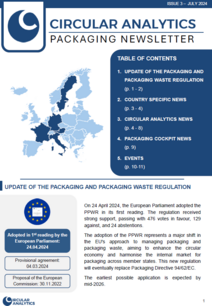
Circular Packaging Newsletter 03/2024
Juli 2024
- Updates on the Packaging and Packaging Waste Regulation
- Country-specific updates regarding the packaging industry
- Circular Analytics News – Benchmarking for beverage packaging
- Packaging Cockpit News – Latest features and innovatives
- Upcoming events
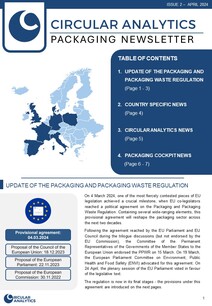
Circular Packaging Newsletter 02/2024
April 2024
- Update of the Packaging and Packaging Waste Regulation
- Country-specific updates regarding the packaging industry
- Circular Analytics News – Benchmarking project for convenience products
- Packaging Cockpit News – Latest features and partnerships

Circular Packaging Newsletter 01/2024
Februar 2024
- Die wichtigsten Etappen und Inhalte der Packaging and Packaging Waste Regulation
- Länderspezifische neue gesetzliche Verordnungen im Verpackungsbereich
- Einblick in ausgewählte Forschungsprojekte und Ankündigung der nächsten spannenden Webinare und Veranstaltungen
Guidelines
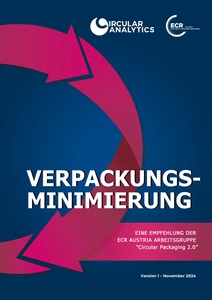
Verpackungsminimierung
Eine Empfehlung der ECR AUSTRIA ARBEITSGRUPPE „Circular Packaging 2.0“
Konzeption und Text: Circular Analytics: Lina Wimmer, Ernst Krottendorfer, Manfred Tacker
2024
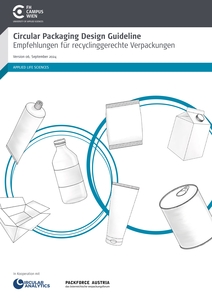
Circular Packaging Design Guideline
Empfehlungen für die Gestaltung recyclinggerechter Verpackungen
Konzeption und Text: FH Campus Wien, Circular Analytics und Packforce Austria
2024
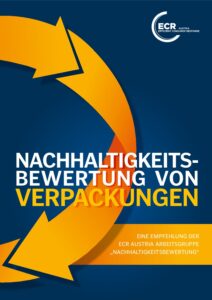
Nachhaltigkeitsbewertung von Verpackungen
Eine Empfehlung der ECR Austria Arbeitsgruppe „Nachhaltigkeitsbewertung“
Konzeption und Text: FH Campus Wien und Circular Analytics
2023
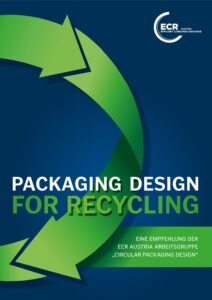
Packaging Design for Recycling
Eine Empfehlung der ECR Austria Arbeitsgruppe „Circular Packaging Design“
Konzeption und Text: FH Campus Wien und Circular Analytics
2023
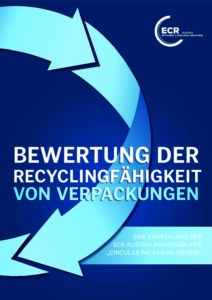
Bewertung der Recyclingfähigkeit von Verpackungen
Eine Empfehlung der ECR Austria Arbeitsgruppe „Circular Packaging Design“
Konzeption und Text: Circular Analytics und FH Campus Wien
2023
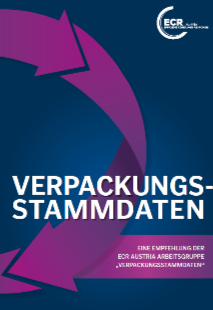
Verpackungsstammdaten
Eine Empfehlung der ECR Austria Arbeitsgruppe „Verpackungsstammdaten“
Konzeption und Text: ECR Austria, GS1 Austria, Circular Analytics und FH Campus Wien
2022
Präsentationen
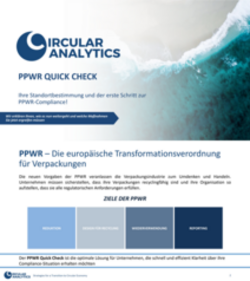
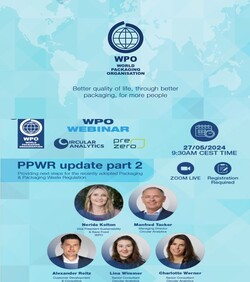
WEBINAR PPWR Update part 2: Providing next steps for the recently adopted Packaging & Packaging Waste Regulations
Nerida Kelton, Lina Wimmer, Manfred Tacker, Charlotte Werner & Alexander Reitz
Mai 2024 – im Rahmes des WPO Webinars Part 2
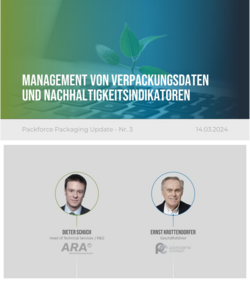
Management von Verpackungsdaten und Nachhaltigkeitsindikatoren
Dieter Schuch & Ernst Krottendorfer
März 2024 – im Rahmen des Packforce Packaging Updates Nr. 3
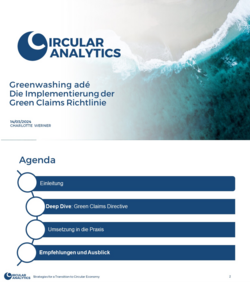
Greenwashing adé – Die Implementierung der Green Claims Richtlinie
März 2024 – im Rahmen des Packforce Packaging Updates Nr. 3
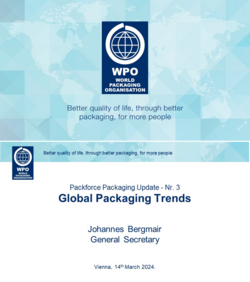
Global Packaging Trends
Johannes Bergmair
März 2024 – im Rahmen des Packforce Packaging Updates Nr. 3
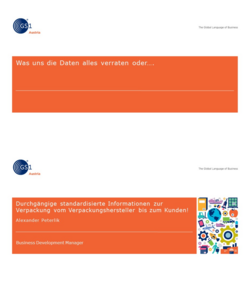
Durchgängige standardisierte Informationen zur Verpackung vom Verpackungshersteller bis zum Kunden!
Alexander Peterlik
März 2024 – im Rahmen des Packforce Packaging Updates Nr. 3
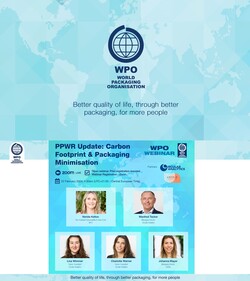
WEBINAR PPWR Update: Carbon Footprint & Packaging Minimisation
Nerida Kelton, Johanna Mayer, Lina Wimmer, Manfred Tacker und Charlotte Werner
Februar 2024 – im Rahmen eines Webinars
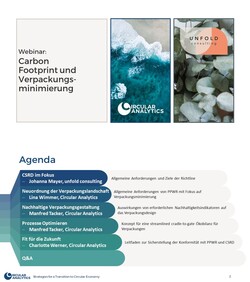
Carbon Footprint und Verpackungsminimierung
Johanna Mayer, Lina Wimmer, Manfred Tacker und Charlotte Werner
Jänner 2024 – im Rahmen eines Webinars
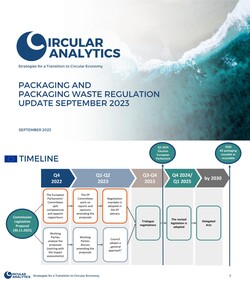
Packaging and Packaging Waste Regulation Update
September 2023 – im Rahmen des Packforce Packaging Updates Nr. 2
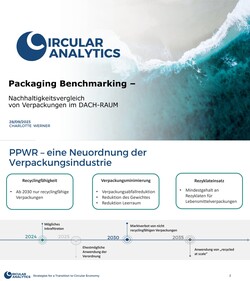
Packaging Benchmarking
September 2023 – im Rahmen des Packforce Packaging Updates Nr. 2
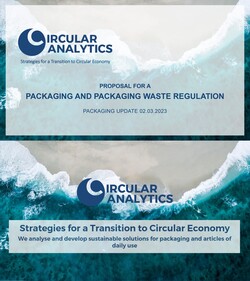
Packaging and Packaging Waste Regulation
März 2023 – im Rahmen des Packforce Packaging Updates Nr. 1
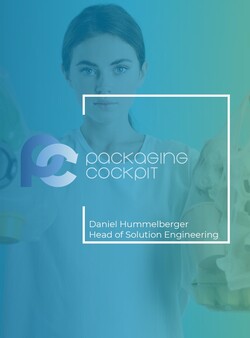
Packaging Specification Management Software
Daniel Hummelberger
März 2023 – im Rahmen des Packforce Packaging Updates Nr. 1
Live-Mitschnitte

WEBINAR PPWR Update: Carbon Footprint & Packaging Minimisation (EN)
Februar 2024
Der Download-Button führt zum Video auf YouTube.

Webinar Carbon Footprint und Verpackungsminimierung
Jänner 2024
Der Download-Button führt zum Video auf YouTube.
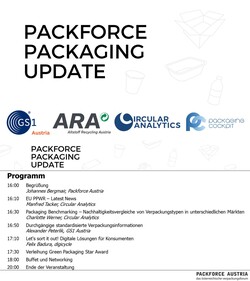
Packforce Packaging Update Nr. 2
September 2023
Der Download-Button führt zum Video auf YouTube.
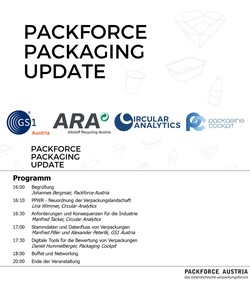
Packforce Packaging Update Nr. 1
März 2023
Der Download-Button führt zum Video auf YouTube.
Artikel
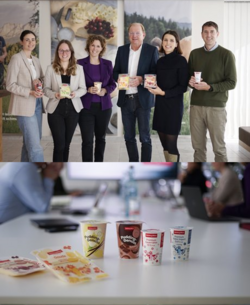

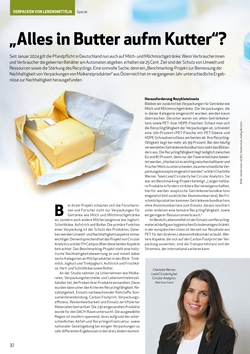
„Alles in Butter aufm Kutter“?
Interview mit Charlotte Werner
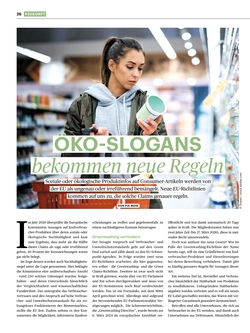
Öko-Slogans bekommen neue Regeln
Ein Interview von Pia Moik mit Charlotte Werner
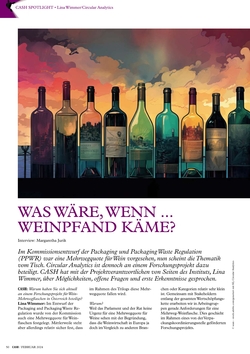
Was wäre, wenn … Weinpfand käme?
Ein Interview von Margaretha Jurik mit Lina Wimmer
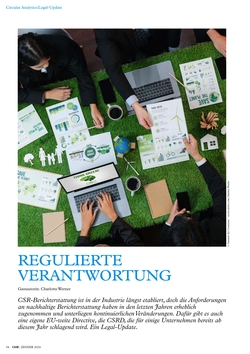
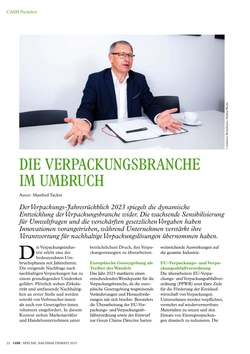
Verpackungs-Jahresrückblick 2023
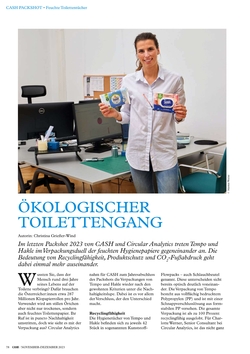
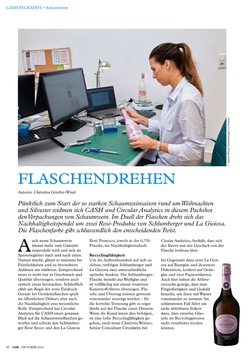
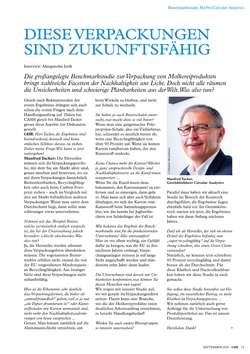
Benchmark-Studie Verpackungen von Molkereiprodukten
Ein Interview von Margaretha Jurik mit Manfred Tacker
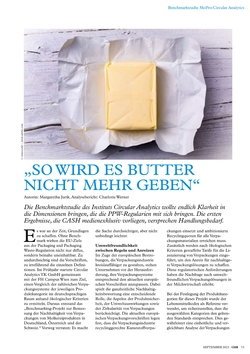
Benchmark-Studie Verpackungen in der Milchwirtschaft
Margaretha Jurik und Charlotte Werner
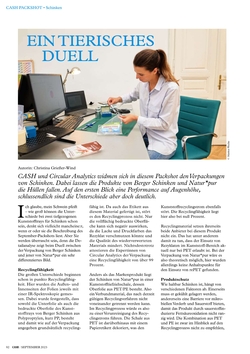
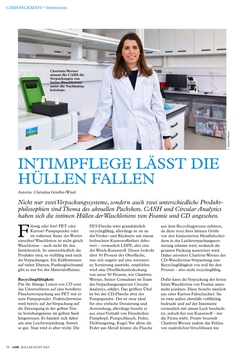
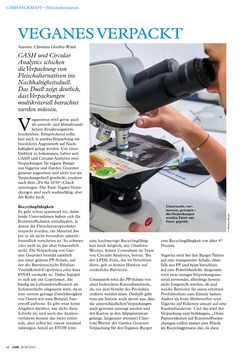
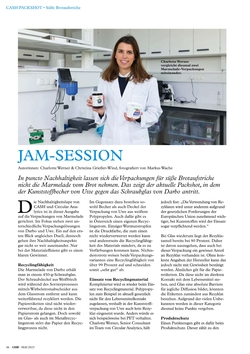
Verpackungen für süße Brotaufstriche
Charlotte Werner und Christina Grießer-Wind
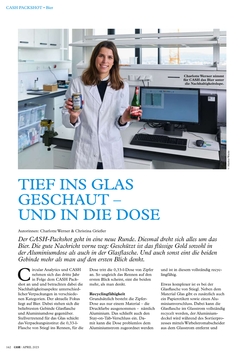
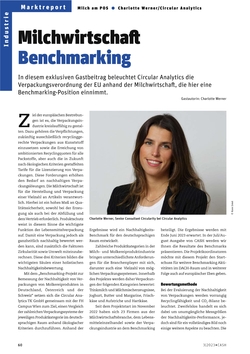
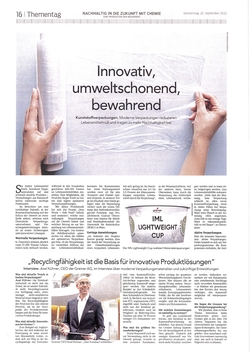
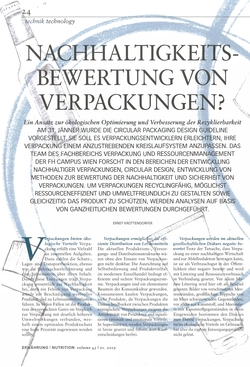
Nachhaltigkeitsbewertung von Verpackungen?
Die Ernährung Volume 43 | 01. 2019
Publikationen
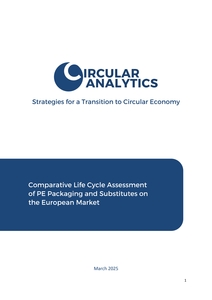
Comparative Life Cycle Assessment of PE Packaging and Substitutes on the European Market – Summary Report
Manfred Tacker, Andrin Gstöhl, Tasja Hafner-Kuhn, Marius Rauch und Katja Wack
2025
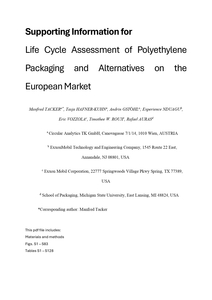
Supporting Information for Life Cycle Assessment of Polyethylene Packaging and Alternatives on the European Market
Manfred Tacker, Tasja Hafner-Kuhn, Andrin Gstöhl, Experience Nduagu, Eric Vozzola, Timothee W. Roux, Rafael Auras
2025
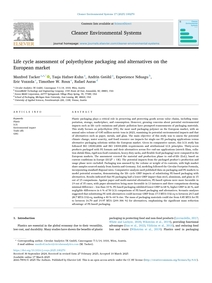
Life cycle assessment of polyethylene packaging and alternatives on the European market
Manfred Tacker, Tasja Hafner-Kuhn, Andrin Gstöhl, Experience Nduagu, Eric Vozzola, Timothee W. Roux, Rafael Auras
2025
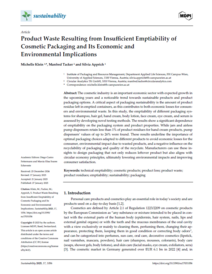
Product Waste Resulting from Insufficient Emptiability of Cosmetic Packaging and Its Economic and Environmental Implications
Michelle Klein, Manfred Tacker und Silvia Apprich
2025
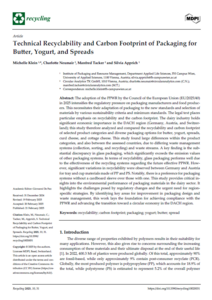
Technical Recyclability and Carbon Footprint of Packaging for Butter, Yogurt, and Spreads
Michelle Klein, Charlotte Neumair, Manfred Tacker und Silvia Apprich
2025
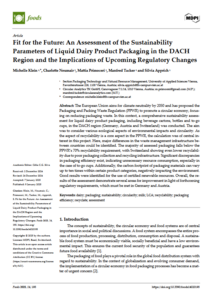
Fit for the Future: An Assessment of the Sustainability Parameters of Liquid Dairy Product Packaging in the DACH Region and the Implications of Upcoming Regulatory Changes
Michelle Klein, Charlotte Neumair, Mattia Primoceri, Manfred Tacker und Silvia Apprich
2025
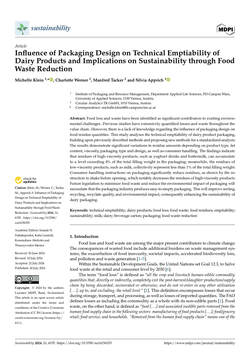
Influence of Packaging Design on Technical Emptiability of Dairy Products and Implications on Sustainability through Food Waste Reduction
Michelle Klein, Charlotte Werner, Manfred Tacker und Silvia Apprich
2024
Mehr erfahren
Food loss and waste have been identified as significant contributors to existing environmental challenges. Previous studies have extensively quantified losses and waste throughout the value chain. However, there is a lack of knowledge regarding the influence of packaging design on food residue quantities. This study analyses the technical emptiability of dairy product packaging, building upon previously described methods and proposing new methods for a standardized analysis. The results demonstrate significant variations in residue amounts depending on product type, fat content, viscosity, packaging type and design, as well as consumer handling. The findings indicate that residues of high-viscosity products, such as yoghurt drinks and buttermilk, can accumulate to a level exceeding 4% of the total filling weight in the packaging; meanwhile, the residues of low-viscosity products, such as milk, collectively represent less than 1% of the total filling weight. Consumer handling instructions on packaging significantly reduce residues, as shown by the instructionto shake before opening, which notably decreases the residues of high-viscosity products. Future legislation to minimize food waste and reduce the environmental impact of packaging will necessitate that the packaging industry produces easy-to-empty packaging. This will improve sorting, recycling, recyclate quality and environmental impact, consequently enhancing the sustainability of dairy packaging.
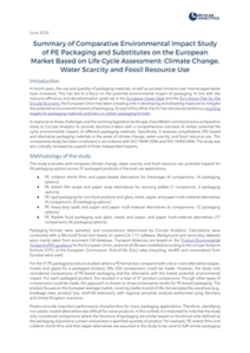
Comparative Environmental Impact Study of PE Packaging and Substitutes on the European Market Based on Life Cycle Assessment: Climate Change, Water Scarcity and Fossil Resource Use – Summary Report
Circular Analytics
2024
Summary of Comparative Environmental Impact Study of PE Packaging and Substitutes on the European Market Based on Life Cycle Assessment: Climate Change, Water Scarcity and Fossil Resource Use.

Technical recommendations on possible elements and parameters of a methodology to assess recyclability of packaging in the framework of the Packaging and Packaging Waste Regulation Proposal
Egle, L., Pierri, E., Gaudillat, P., Gallo, F., Mathieux, F., Saveyn, H.
2024
Die Publikation beruft sich u.a. auf zwei Guidelines, die von Circular Analytics zusammen mit Partnern ausgearbeitet wurden: Packaging Design for Recycling und Circular Packaging Design Guideline
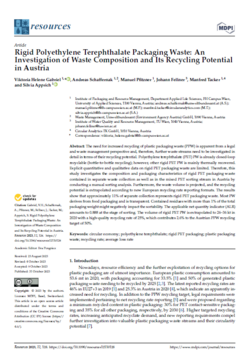
Rigid Polyethylene Terephthalate Packaging Waste: An Investigation of Waste Composition and Its Recycling Potentialin Austria
Viktoria Helene Gabriel, Andreas Schaffernak, Manuel Pfitzner, Johann Fellner, Manfred Tacker & Silvia Apprich
2023
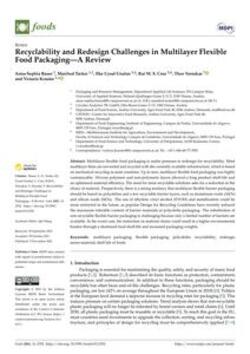
Recyclability and Redesign Challenges in Multilayer Flexible Food Packaging – A Review
Anna-Sophia Bauer, Manfred Tacker, Ilke Uysal-Unalan, Rui M. S. Cruz, Theo Varzakas und Victoria Krauter
2021
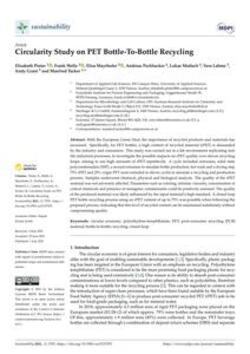
Circularity Study on PET Bottle-To-Bottle Recycling
Elisabeth Pinter, Frank Welle, Elisa Mayrhofer, Andreas Pechhacker, Lukas Motloch, Vera Lahme, Andy Grant und Manfred Tacker
2021
Mehr erfahren
With the European Green Deal, the importance of recycled products and materials has increased. Specifically, for PET bottles, a high content of recycled material (rPET) is demanded by the industry and consumers. This study was carried out in a lab environment replicating real-life industrial processes, to investigate the possible impacts on rPET quality over eleven recycling loops, aiming to use high amounts of rPET repetitively. A cycle included extrusion, solid state polycondensation (SSP), a second extrusion to simulate bottle production, hot wash and a drying step. 75% rPET and 25% virgin PET were extruded in eleven cycles to simulate a recycling and production process. Samples underwent chemical, physical and biological analysis. The quality of the rPET material was not adversely affected. Parameters such as coloring, intrinsic viscosity, concentration of critical chemicals and presence of mutagenic contaminants could be positively assessed. The quality of the produced material was likely influenced by the input material’s high standard. A closed loop PET bottle recycling process using an rPET content of up to 75% was possible when following the proposed process, indicating that this level of recycled content can be maintained indefinitely without compromising quality.
Sustainability 2021, 13(13), 7370; https://doi.org/10.3390/su13137370
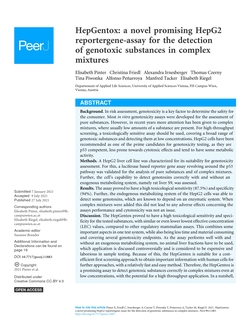
HepGentox: a novel promising HepG2 reportergene-assay for the detection of genotoxic substances in complex mixtures
Elisabeth Pinter, Christina Friedl, Alexandra Irnesberger, Thomas Czerny, Tina Piwonka, Alfonso Peñarroya, Manfred Tacker und Elisabeth Riegel
2021
Mehr erfahren
Background: In risk assessment, genotoxicity is a key factor to determine the safety for the consumer. Most in vitro genotoxicity assays were developed for the assessment of pure substances. However, in recent years more attention has been given to complex mixtures, where usually low amounts of a substance are present. For high-throughput screening, a toxicologically sensitive assay should be used, covering a broad range of genotoxic substances and detecting them at low concentrations. HepG2 cells have been recommended as one of the prime candidates for genotoxicity testing, as they are p53 competent, less prone towards cytotoxic effects and tend to have some metabolic activity.
Methods: A HepG2 liver cell line was characterized for its suitability for genotoxicity assessment. For this, a luciferase based reporter gene assay revolving around the p53 pathway was validated for the analysis of pure substances and of complex mixtures. Further, the cell’s capability to detect genotoxins correctly with and without an exogenous metabolizing system, namely rat liver S9, was assessed.
Results: The assay proved to have a high toxicological sensitivity (87.5%) and specificity (94%). Further, the endogenous metabolizing system of the HepG2 cells was able to detect some genotoxins, which are known to depend on an enzymatic system. When complex mixtures were added this did not lead to any adverse effects concerning the assays performance and cytotoxicity was not an issue.
Discussion: The HepGentox proved to have a high toxicological sensitivity and specificity for the tested substances, with similar or even lower lowest effective concentration (LEC) values, compared to other regulatory mammalian assays. This combines some important aspects in one test system, while also being less time and material consuming and covering several genotoxicity endpoints. As the assay performs well with and without an exogenous metabolizing system, no animal liver fractions have to be used, which application is discussed controversially and is considered to be expensive and laborious in sample testing. Because of this, the HepGentox is suitable for a cost-efficient first screening approach to obtain important information with human cells for further approaches, with a relatively fast and easy method. Therefore, the HepGentox is a promising assay to detect genotoxic substances correctly in complex mixtures even at low concentrations, with the potential for a high throughput application. In a nutshell, as part of an in vitro bioassay test battery, this assay could provide valuable information for complex mixtures.
2021, PeerJ 9:e11883https://doi.org/10.7717/peerj.11883
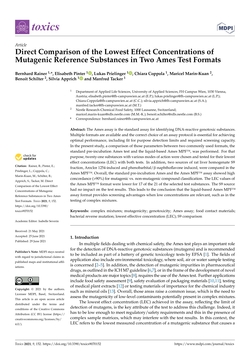
Direct Comparison of the Lowest Effect Concentrations of Mutagenic Reference Substances in Two Ames Test Formats
Bernhard Rainer, Elisabeth Pinter, Lukas Prielinger, Chiara Coppola, Maricel Marin-Kuan, Benoit Schilter, Silvia Apprich und Manfred Tacker
2021
Mehr erfahren
The Ames assay is the standard assay for identifying DNA-reactive genotoxic substances. Multiple formats are available and the correct choice of an assay protocol is essential for achieving optimal performance, including fit for purpose detection limits and required screening capacity. In the present study, a comparison of those parameters between two commonly used formats, the standard pre-incubation Ames test and the liquid-based Ames MPF™, was performed. For that purpose, twenty-one substances with various modes of action were chosen and tested for their lowest effect concentrations (LEC) with both tests. In addition, two sources of rat liver homogenate S9 fraction, Aroclor 1254-induced and phenobarbital/β-naphthoflavone induced, were compared in the Ames MPF™. Overall, the standard pre-incubation Ames and the Ames MPF™ assay showed high concordance (>90%) for mutagenic vs. non-mutagenic compound classification. The LEC values of the Ames MPF™ format were lower for 17 of the 21 of the selected test substances. The S9 source had no impact on the test results. This leads to the conclusion that the liquid-based Ames MPF™ assay format provides screening advantages when low concentrations are relevant, such as in the testing of complex mixtures.
Toxics 2021, 9(7), 152; https://doi.org/10.3390/toxics9070152
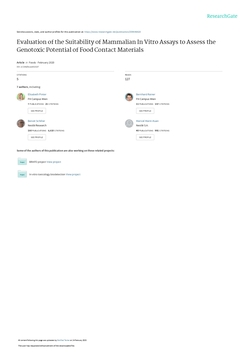
Evaluation of the Suitability of mammalian In Vitro Assays to Assess the Genotoxic Potential of Food Contact Materials
Elisabeth Pinter, Bernhard Rainer, Thomas Czerny, Elisabeth Riegel, Benoît Schilter, Maricel Marin-Kuan und Manfred Tacker
2020
Mehr erfahren
Background: Non-targeted screening of food contact materials (FCM) for non-intentionally added substances (NIAS) reveals a great number of unknown and unidentified substances present at low concentrations. In the absence of toxicological data, the application of the threshold of toxicological concern (TTC) or of EU Regulation 10/2011 requires methods able to fulfill safety threshold criteria. In this review, mammalian in vitro genotoxicity assays are analyzed for their ability to detect DNA-damaging substances at limits of biological detection (LOBD) corresponding to the appropriate safety thresholds. Results: The ability of the assays to detect genotoxic effects varies greatly between substance classes. Especially for direct-acting mutagens, the assays lacked the ability to detect most DNA reactive substances below the threshold of 10 ppb, making them unsuitable to pick up potential genotoxicants present in FCM migrates. However, suitability for the detection of chromosomal damage or investigation of other modes of action makes them a complementary tool as part of a standard test battery aimed at giving additional information to ensure safety. Conclusion: improvements are necessary to comply with regulatory thresholds to consider mammalian genotoxicity in vitroassays to assess FCM safety.
Foods 2020 Feb; 9(2):237; doi: 10.3390/foods9020237
Weitere Publikationen
1. B. Schilter et al. (2019): Value and limitation of in vitro bioassays to support the application of the threshold of toxicological concern to prioritise unidentified chemicals in food contact. Food Additives & Contaminants: Part A 36(12):1903-1936.
2. B. Rainer, E. Mayrhofer, M. Redl, I. Dolak, D. Mislivecek, T. Czerny, E. Riegel, C. Kirchnawy, M. Marin-Kuan, B. Schilter & M. Tacker (2019): Mutagenicity assessment of food contact material migrates with the Ames MPF assay, Food Additives & Contaminants: Part A. • DOI:10.1080/19440049.2019.1634841
3. B. Rainer, E. Pinter, E. Riegel, C. Kirchnawy, M. Marin-Kuan, B. Schilter & M. Tacker (2018): Suitability of the AMES test to characterise genotoxicity of food contact material migrates. Food Additives & Contaminants: Part A. DOI:10.1080/19440049.2018.1519259
